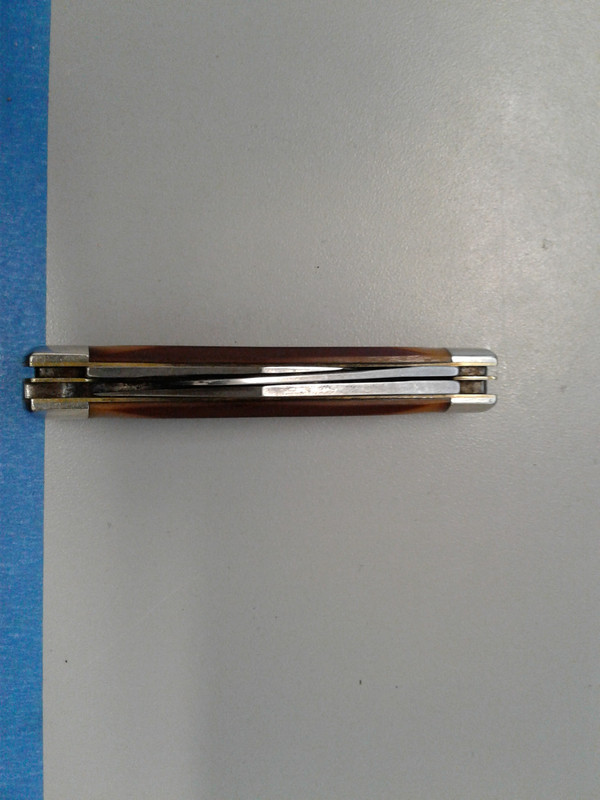- Joined
- Jul 10, 2017
- Messages
- 32

This knife came out when I decided to breath some life into it.
It had a broken scale and no snap left in the blade.
I thought I could regrind the base of the tag to sharpen it up a bit and give it some snap and make a nice carry knife since the blade had some life left in it.
Plus, I liked it. Everything went fine.
As some of you know these Schrade knives use a Swinden Key Pivot, so I decided to drill the bolsters and put it together properly (in my humble opinion).
OK. These are all common practices for knife makers.........
When the knife is as you see it now, about 80% done, i decide the blade isn't centered and I can fix that right up.
I know a bit about crinking but haven't had much luck with it so I decided to put a little bend near the tang (I've had success with this in the past).
As I was applying pressure I knew it was a bad idea. It was.
I've searched the forum and the net and have found a few example and references to crinking, but was wondering if someone out there has experience with it or still does it to a degree that they can actually show or explain their process.
Propping up blade, supporting points, how hard to hit.
Please share your wisdom on this seemingly lost art.
Reaching out.
Thanks all.
Rob.




